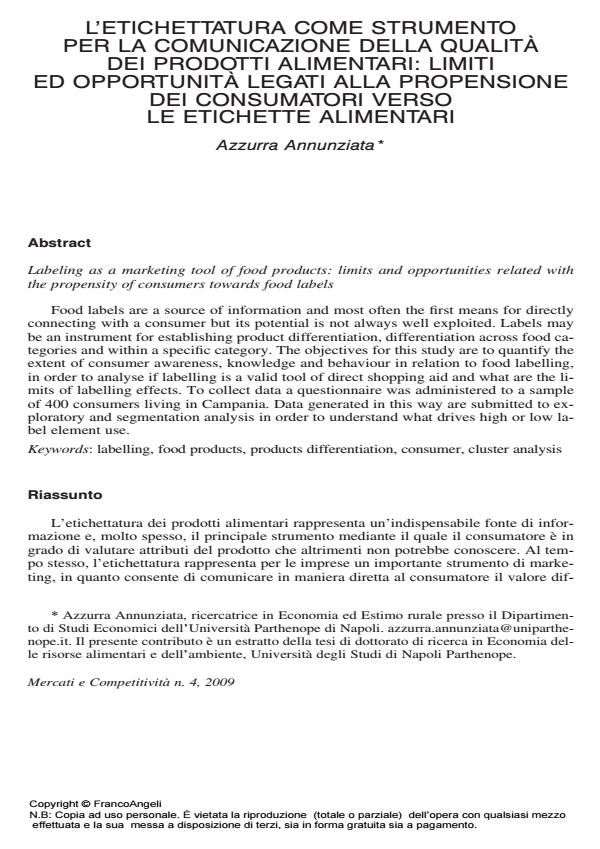L'etichettatura come strumento per la comunicazione della qualità dei prodotti alimentari: limiti ed opportunità legati alla propensione dei consumatori verso le etichette alimentari
Journal title MERCATI E COMPETITIVITÀ
Author/s Azzurra Annunziata
Publishing Year 2009 Issue 2009/4
Language Italian Pages 20 P. 147-166 File size 1028 KB
DOI 10.3280/MC2009-004008
DOI is like a bar code for intellectual property: to have more infomation
click here
Below, you can see the article first page
If you want to buy this article in PDF format, you can do it, following the instructions to buy download credits

FrancoAngeli is member of Publishers International Linking Association, Inc (PILA), a not-for-profit association which run the CrossRef service enabling links to and from online scholarly content.
Labeling as a marketing tool of food products: limits and opportunities related with the propensity of consumers towards food labels - Food labels are a source of information and most often the first means for directly connecting with a consumer but its potential is not always well exploited. Labels may be an instrument for establishing product differentiation, differentiation across food categories and within a specific category. The objectives for this study are to quantify the extent of consumer awareness, knowledge and behaviour in relation to food labelling, in order to analyse if labelling is a valid tool of direct shopping aid and what are the limits of labelling effects. To collect data a questionnaire was administered to a sample of 400 consumers living in Campania. Data generated in this way are submitted to exploratory and segmentation analysis in order to understand what drives high or low label element use.
Keywords: Labelling, food products, products differentiation, consumer, cluster analysis
Azzurra Annunziata, L'etichettatura come strumento per la comunicazione della qualità dei prodotti alimentari: limiti ed opportunità legati alla propensione dei consumatori verso le etichette alimentari in "MERCATI E COMPETITIVITÀ" 4/2009, pp 147-166, DOI: 10.3280/MC2009-004008